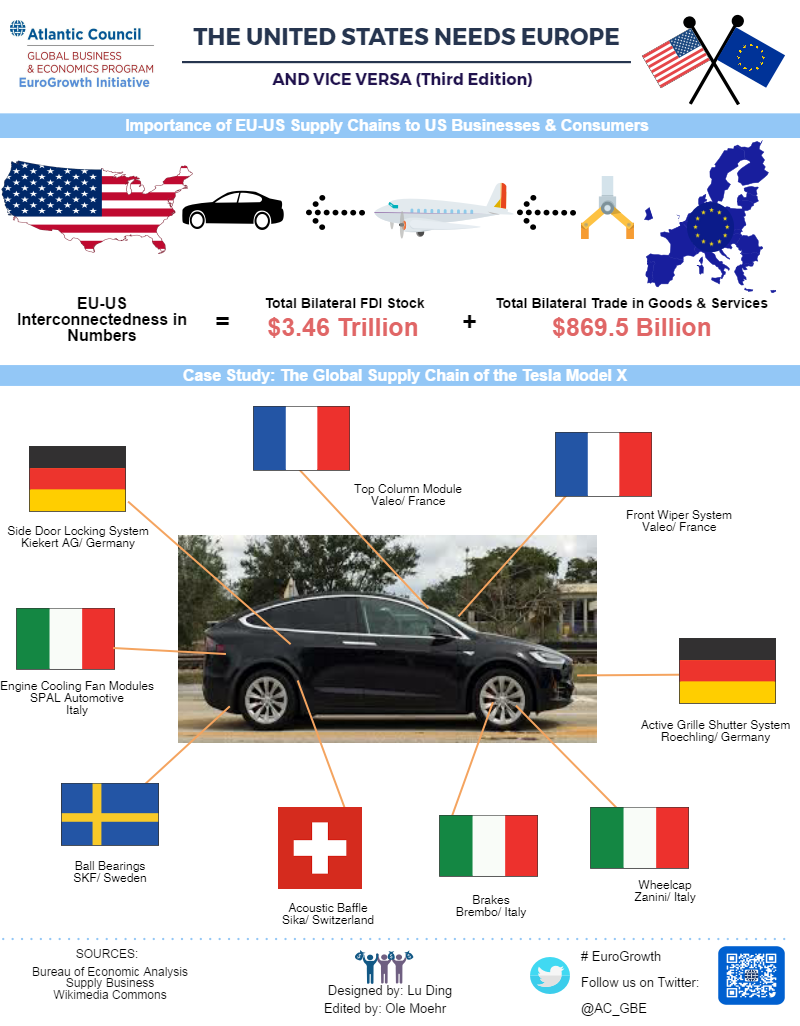This EconoGraphic is the final edition of a three-part series on why the United States and Europe need each other. The series highlights excerpts from the EuroGrowth Task Force’s inaugural report on European economic growth and why it matters for US prosperity. The Global Business & Economics Program launched this timely report on March 10, 2017 at the Atlantic Council. If you would like to learn more about the report, please visit: http://www.atlanticcouncil.org/publications/reports/charting-the-future-now.
European Union (EU) (27) and the United States are not just the two largest economies in the world, they are also among the most interconnected. Based on the McKinsey Global Institute connectedness score, the United States ranks third, while five EU (27) countries rank among the top ten when one considers five indicators of economic interconnectedness: flows of goods, services, finance, people, and data. Such openness makes the United States and the EU countries more likely to gain from an expansion of the world economy.
The size and openness of the EU and US economies are reflected in their bilateral trade and investment relations. The transatlantic market is by far the largest in the world on trade, foreign direct investment, and financial flows.

Yet, supply chains paint an even more vivid picture of the inter-reliance of the EU (27) and the United States. With the increasing access to resources and markets all over the world, technological progress, lower transportation costs, and above all the IT revolution, many products are the result of a global supply chain. The ability to import high-quality and high technological intermediate goods and, in turn, export the final good worldwide is one of the key component of competitiveness. While the United States can benefit from cheap intermediate goods imported from emerging markets, technology is bought primarily from European and Asian companies.
Tesla Motors, which produces its cars in the United States, provides a compelling case study. The 2016 Tesla Model X embeds forty-six components produced by thirty-six different companies headquartered in twelve countries. The United States houses the most companies, with fourteen suppliers calling the United States home, but fifteen of the other twenty-two suppliers are headquartered in Europe. So, Tesla and its European suppliers are engaged in mutually beneficial trade. And Tesla is only one of many examples.
In fact, according to the Economic Report of the President, almost half of US imports are intermediary goods in the production process. The European economy provides US companies with greater choice and competitive prices when sourcing intermediary inputs with high technological content. This reduces the cost of production in the United States and benefits the US economy.
Further cooperation between the United States and the EU (27) on developing supply chains will further encourage technological progress, stimulate competition as well as innovation, and increase transatlantic trade volume. It would also have a positive impact on US jobs. According to a report by Trade Partnership Worldwide, published in January 2016, 6.9 million American jobs are directly dependent on trade with Europe. A stronger European economy and a greater trade volume would only increase that number.
